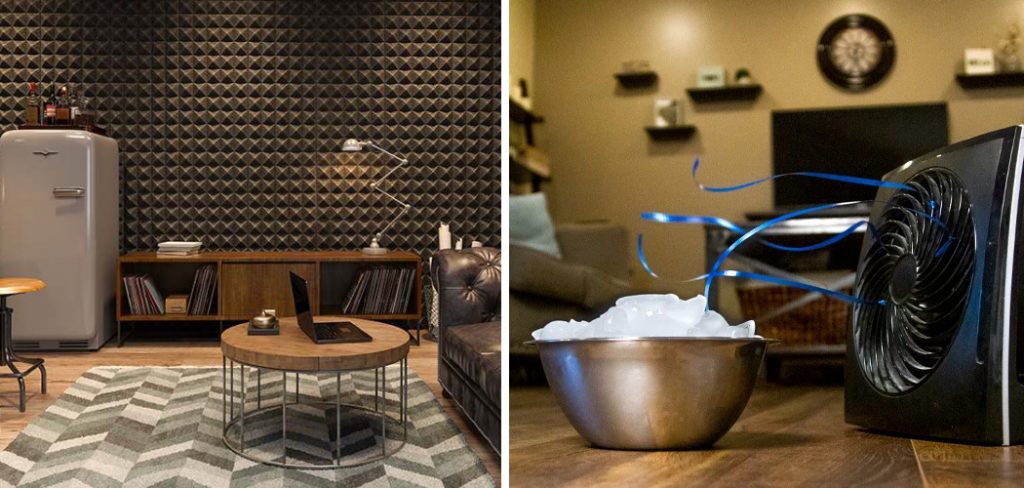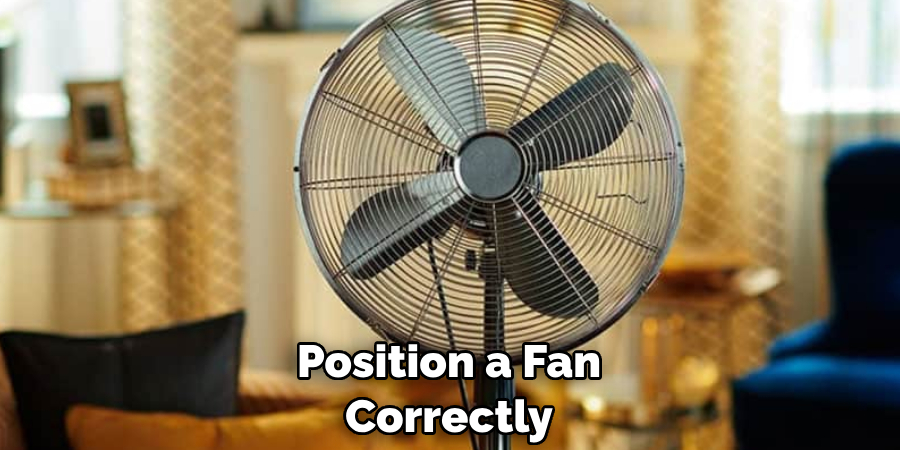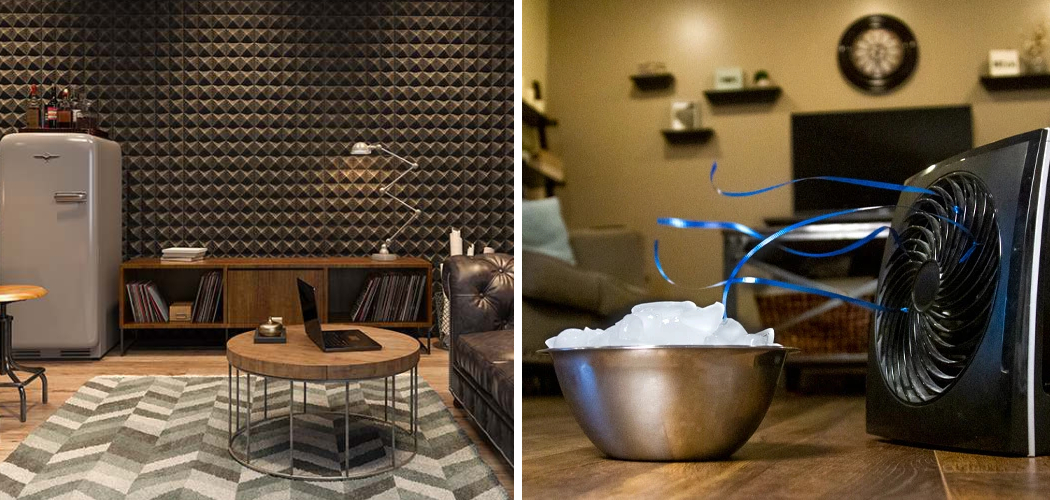Are you looking for a way to cool down your room but need the luxury of windows? Summertime can be rough, and it can become unbearable without enough access to airflow. Have no fear!
We’re here with all the best tips and tricks on how to cool a room with no windows. With our tried-and-tested methods, soon you’ll be able to relax in comfortable temperatures even when external conditions aren’t ideal.

Whether it’s your bedroom, den, study, or other living space, these methods will make a difference. In this blog post, We discuss the basics to more advanced methods for cooling rooms with no windows. Keep reading to find out how you can stay cool and comfortable from now on!
What Will You Need?
Before getting started, knowing what kind of materials you’ll need is important. Here are some key items that can help you cool your room with no windows:
- A fan:
- Ice packs/cooling mats:
- Portable air conditioner
- Reflective insulation film:
- Insulating curtains or blinds:
Once you have the necessary items, you will be ready to start cooling your room.
10 Easy Steps on How to Cool a Room With No Windows
Step 1: Position a Fan Correctly
The first step in cooling a room with no windows is correctly positioning a fan. If you have a ceiling fan, ensure it’s spinning counterclockwise. This will push cool air down to the floor.
If you’re using a box or pedestal fan, place it at various points in the room to determine where it can provide the best airflow. Maximizing the effectiveness of the fan is crucial in maintaining a cooler environment.

Step 2: Utilize Cooling Mats and Ice Packs
The second step involves using cooling mats and ice packs. Cooling mats are not just for laptops or pets. They are also great for cooling down rooms. Simply place a cooling mat on your bed or seating area for instant temperature reduction.
Similarly, ice packs can be placed in front of a fan to generate a breeze of cool air. Be sure to place the ice packs in a shallow tray or on a towel to contain any condensation. Remember to rotate your ice packs regularly to maintain a cool temperature.
Step 3: Install a Portable Air Conditioner
Installing a portable air conditioner is step number three. While using an air conditioner in a windowless room might sound counterintuitive, portable air conditioners are specifically designed for such scenarios. They come with a venting kit that can easily be installed in most standard doors.
This system cools and dehumidifies the air, creating a more comfortable environment. Keep the door closed as much as possible to retain the cool air and prevent the unit from working harder than necessary.
Step 4: Apply Reflective Insulation Film
The fourth step is applying reflective insulation film, or window film, to any glass doors or surfaces in your room. Although your room does not have windows, other glass surfaces can still transfer heat.
This film reflects the sun’s rays outside, preventing them from heating up your room. It is easy to apply, and most varieties are adhesive-free, relying on static to stick to the glass. This measure can drastically reduce the amount of solar heat gain in your room, minimizing the cooling efforts needed.

Step 5: Use Insulating Curtains or Blinds
The fifth step to cool a room with no windows is insulating curtains or blinds. Even if your room doesn’t have windows, it may still have doors or other openings that let in light and heat. Using thermal insulating curtains or blinds on these openings can significantly reduce the heat entering the room.
These curtains and blinds are made of a special fabric that reflects heat, keeping your room cooler. When closed, they create a barrier between your room’s hot exterior and cool interior, helping maintain a comfortable temperature.
Step 6: Minimize the Use of Heat-Generating Appliances
The sixth step to cool a room with no windows involves minimizing the use of heat-generating appliances. Electronics and appliances, such as computers, stoves, and televisions, emit heat when used. Try to limit the use of these appliances during the hottest parts of the day.
If you must use them, turn them off immediately after use to prevent unnecessary heat buildup in your room. Additionally, consider using energy-efficient appliances and bulbs that generate less heat.
Step 7: Maintain Lower Humidity Levels
The seventh step is about maintaining lower humidity levels in the room. High humidity can make the room feel hotter than it actually is. To counter this, consider using a dehumidifier. It removes excess moisture from the air, reducing the humidity and helping you feel cooler.
In addition, less humid air allows your sweat to evaporate more easily, enhancing your body’s natural cooling mechanism. Remember to empty the water collection tank regularly to ensure the unit works effectively.

Step 8: Enhance Air Circulation with Multiple Fans
The eighth step revolves around enhancing air circulation in the room by using multiple fans. The idea here is to create a cross-breeze, which helps cool down a room with no windows. Place one fan at the door to push hot air out and another fan on the opposite side to circulate cool air in.
If the room has two doors, one fan should be placed at each door to push hot air out and the other to pull cool air in. This strategy helps to effectively circulate air throughout the room, making it feel much cooler.
Step 9: Use Light-Colored Bedding and Curtains
The ninth step to cool a room with no windows is to use light-colored bedding and curtains. Dark colors absorb heat, which in turn warms up your room. On the contrary, light colors reflect heat, helping to keep your room cool. Choose light-colored, preferably white, sheets, blankets, and curtains.
Next to their heat-reflective properties, they will also make your room seem brighter. Try to use materials made of natural fibers like cotton or linen, as they are breathable and allow better air circulation, enhancing the cooling effect.
Step 10: Opt for Nighttime Ventilation
The tenth step involves using the cooler night air to your advantage. During summer nights, the temperature outside can significantly drop, making it cooler than the inside of your room. Take this opportunity to improve ventilation and cool down your room.
If you have a door leading to the outside or a cooler part of your house, open it for a few hours during the night to let the cool air in. Use your fans to help circulate this air throughout your room.
Following these ten steps, you can effectively and efficiently cool a room without windows. Remember to stay mindful of how your actions will affect the temperature in your room and select strategies that suit your needs best.
5 Additional Tips and Tricks
Tip 1. Use Plants for Natural Cooling: Plants are natural humidifiers that can help cool a room without windows. They release moisture into the air, which can help to cool the room when it evaporates. Furthermore, plants absorb heat, reducing the overall temperature of the room.
Tip 2. Ventilate with a Box Fan: A box fan can be used to create a draft in your room and help cool it down. Place the fan near open windows, doors, or other openings to draw cool air inside while hot air is pushed out.

Tip 3. Install an Electric Fan: An electric fan helps to circulate the air in your room, making it feel cooler. Place the fan near doorways or windows to help draw cool air inside and push out hot air.
Tip 4. Use Ice Packs: If you have an ice pack, you can use it to cool down your space without using a fan or any other cooling device. Simply place the pack at the foot of your bed or in other strategic locations to help make the room feel cooler.
Tip 5. Make Use of Natural Ventilation: If you can access the outdoors, open windows and doors for a few hours during the day when the outside temperature is still cool. This will help draw the cool air inside while pushing out hot air from your room.
Following these simple tips and tricks, you can ensure that your room remains cool and comfortable even with no windows. With just a few changes, you can ensure that your home is a much more pleasant place to be during hot summer days.
5 Things You Should Avoid
- Avoid Excessive Heat Sources: Electronics, appliances, and other heat sources can make a room with no windows feel even hotter. Try to limit the use of these items during hot summer days, and remember to turn them off immediately after use.
- Don’t Overload Electrical Outlets: Plugging too many devices into one electrical outlet can cause it to overheat and increase the temperature in your room. Make sure to spread out the items among different outlets throughout the room.
- Don’t Block Vents: If your space has air conditioning or heating vents, ensure they are not blocked by furniture or other objects. Blocking these can stop them from working effectively and prevent cool air from circulating your space.
- Don’t Overuse the Air Conditioner: An air conditioner can help cool down a room, but if it’s overused, it will make the space even hotter. Use it sparingly and save energy by relying on other strategies, such as opening windows and using fans instead.
- Don’t Keep Windows Open at Night: The temperature outside can drop significantly during summer nights. Don’t take advantage of this by leaving windows open overnight, as this can cause cold air to enter your space and create an uncomfortable atmosphere.

By avoiding these common mistakes, you’ll be able to optimize your room’s cooling strategies and ensure that it stays comfortable even with no windows.
Conclusion
All in all, how to cool a room with no windows may seem like an impossible task – however, there are many ways to go about it and accomplish your goal! You can start by examining your immediate environment and seeing what solutions you have at hand that you can use. Installing a fan or running an AC unit is the most efficient and direct way to cool down a room.
However, if you don’t want to put much thought or money into it, consider using methods such as investing in airflow-controlling items, painting the color of the walls, or changing the light fixtures to create a more comfortable temperature.
If you stay informed about your options and know which solutions work best for your specific need, you can comfortably beat the summer heat without breaking the bank.
